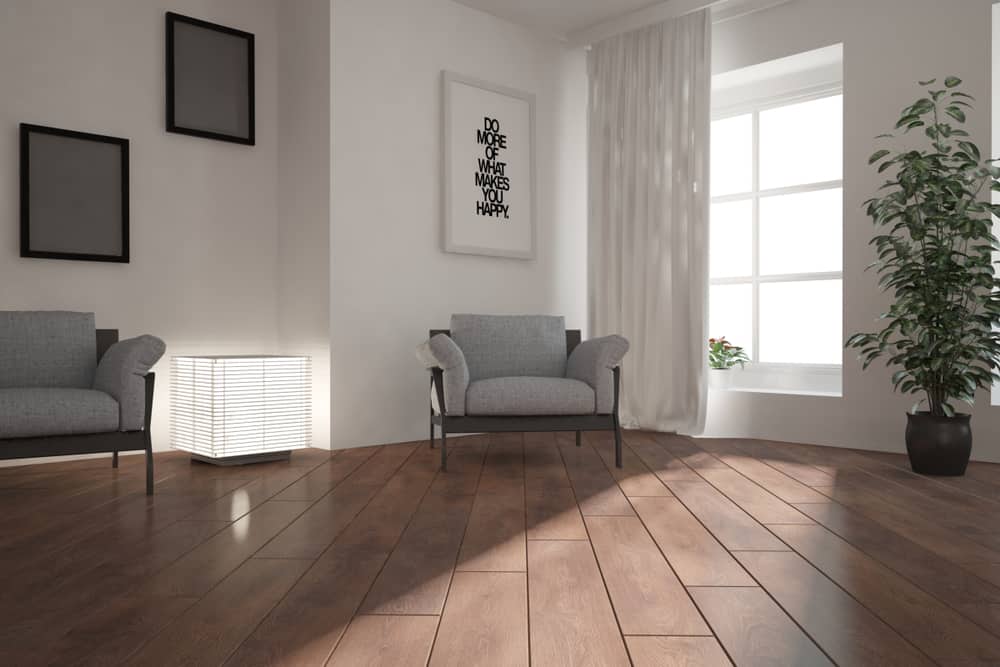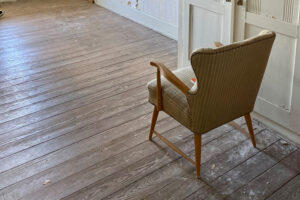
Can laminate be installed on top of an existing floor?
The short answer to this question is ‘yes’.
But, there are a few things you need to consider before you go ahead and install laminate over your existing flooring.
The type of flooring you are laying laminate over is very important, as not every surface is made equal. As a rule of thumb, if your existing flooring is level and smooth, laminate can easily be laid over top. This rules out brick, carpet and natural stone floors.
More uniform flooring like concrete, vinyl, tile and plywood, are all easy to lay laminate over, but you will need to make sure an underlay has gone down before laying your new floor.
What is a laminate underlay?
A laminate underlay is basically a thin, flexible and soft layer of cushioning that is laid between the sub-floor/existing flooring and the laminate. The most common types of underlay are foam, rubber or felt.
Read: Everything you need to know about laminate underlays
Why do I need to use a laminate underlay?
Underlays are essential when installing laminate flooring over a sub-floor, or existing floor like tiles. Not only does an underlay improve the look and quality of the finished laminate, but it acts as a barrier between the laminate and the flooring, creating a perfectly level surface and protecting the laminate from any damage. Most importantly, it protects from any moisture that might come through from the sub-floor, particularly from a concrete slab.
Underlays also absorb sound when you walk on the laminate and act as insulation, all making for a great under-foot feel.
Which laminate underlay is best?
There are a few major factors to consider when choosing the right underlay.
- What is your existing flooring made of?
- Does your laminate come with inbuilt underlay or does it need to be purchased separately?
- What sort of noise reduction and insulation do you want?
- What is your budget?
It is all important when making the decision on what underlay to choose.
Rubber underlays are the most popular and universal. They are hardy, breathable and have a bit of bounce to them, making your floor a lot softer under your feet. But, rubber can tend to be a bit more on the wallet.
For a cheaper alternative, consider a foam underlay. These days, the quality of foam underlays is very comparable to rubber.
If you require more noise reduction and insulation, opt for the thick and heavy felt. Although it is the most expensive option and is most often used for commercial buildings, it is the best option for anyone looking for a high level of comfort, quiet and warmth.
If you are still unsure of what laminate flooring and underlay suits your needs best, head in to Parry’s to speak with one of our consultants.
Further reading about laminate flooring:
Read More Blogs
Article Topics
Recent Articles
-
![Parrys Carpets: The Ultimate Guide to Choosing the Best Flooring for Your Home.]()
The Ultimate Guide to Choosing the Best Flooring for Your Home.
Readying yourself to select new flooring for your home but worried about how to make...
Keep Reading -
![Parrys Carpets: How to Select Flooring Based on your Lifestyle]()
How to Select Flooring Based on your Lifestyle
When selecting flooring for your home, letting your unique lifestyle lead the way to your...
Keep Reading -
![Parrys Carpets: 8 Signs It’s Time To Replace Your Old Floors]()
8 Signs It’s Time To Replace Your Old Floors
If you can’t decide if the time is right to invest in some fabulous new...
Keep Reading



